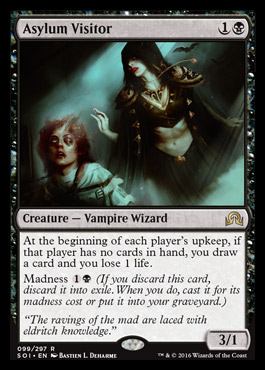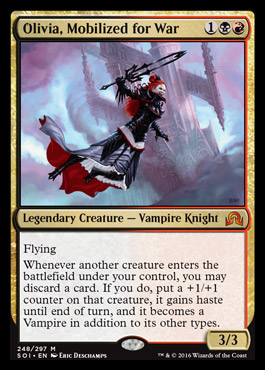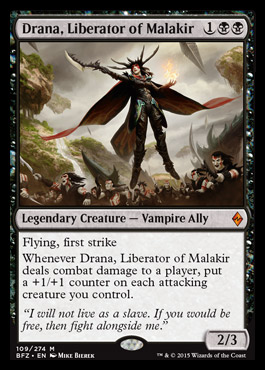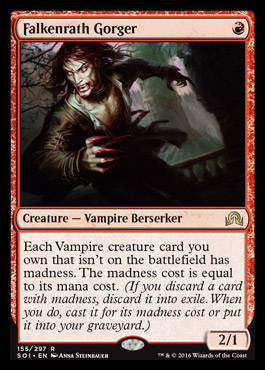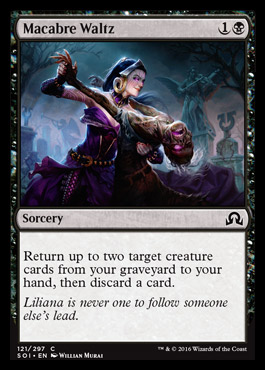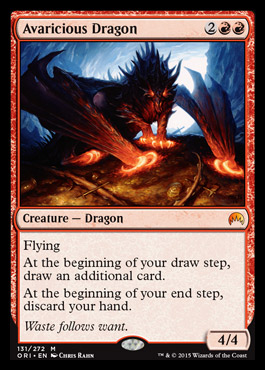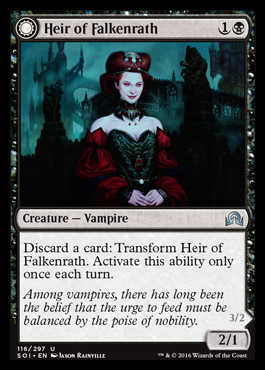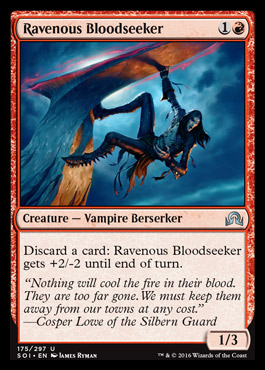Okay, while we're in that weekend doldrum in between spoilers, I thought I'd take a minute to put down my thoughts on return blocks and why SOI seems poised to be the best one.
The prototype for the return blocks is Time Spiral, the first serious attempt in Magic's history to return to a setting after a break and leverage the familiarity and attachment the players have to it to make the set enjoyable. (The only other early example I can think of is retelling parts of the Brother's War in Urza's Saga, which is really so far back into prehistory to skip it here.) We all know that R&D considers this block to be a glorious failure, but there's a lot of technique they developed here: returning mechanics associated with a setting; giving legend cards to story characters who never had one; making cards that mechanically reference older cards that bring back player memories; paying off storylines set up in previous visits. Pretty much every future return would use this stuff (and tend to skip some other stuff that worked less well here, like taking old obscure creature types or factions and making a huge deal of them on return.)
Scars of Mirrodin was their first attempt at a "proper" return block -- taking a one-off plane and revisiting it -- and until now it was almost certainly the best effort. The pitch was solid enough: Mirrodin was the best-selling set ever for like five years, and it was home to a lot of powerful, beloved cards. The problem was that Mirrodin was also a setting that a lot of people hate, because of how badly it screwed up the tournament environment. SoM couldn't go back to the one mechanic people tend to remember Mirrodin by (affinity) due to development veto, and with most other block mechanics either evergreen (indestructible, equipment) or off-theme (sunburst, entwine) there was pretty much just one niche option that didn't do much to deliver the Mirrodin feel. Similarly, most MIR strategies were seriously nerfed, leaving the Mirran side feeling like a pale reflection. Ultimately, it was the second "return" aspect that salvaged the block: the Phyrexians were also something super-popular to return to, but without a specific broken mechanical identity they could be jacked up and made properly terrifying. (Ironically, given that their mechanical identity is infect and phyrexian mana, they're gonna have the same problems the next time we see them.) The Phyrexians even managed to make the Mirrodin nostalgia work better by Compleating the plane's inhabitants -- stuff like Stoic Rebuttal is a thin imitation of the first Mirrodin, but something like Blightsteel Colossus calls back to the old block and makes the new version properly awe-inspiring. Ultimately the result was an uneven but interesting return effort and a decent starting point that evolves into a better ending place than it started.
Return to Ravnica had an unusual problem: the first version was too good. More specifically, Ravnica was an incredibly popular and successful block, but also the tightest-buttoned block probably ever: the sets were structured head to toe around the guild concept, meaning each one was filled to the top with 10-card cycles, large quantities of gold and hybrid cards, and all kinds of mandatory structural stuff. Ravnica's packed so tight that there's no room for anything else -- like, every one of the legendary creatures in the original RAV block is either a guild leader or champion, there's no room for even a single other character. The result is that the block has probably the fewest surprises of any, ever (the split cards in Dissention were pretty much the only one.) When Return to Ravnica decided to go back to everything people loved about the first block (shocklands! hybrids! guild leaders!) it locked itself into a similar problem: there was no room to be surprising. Callbacks like guild leaders used up a lot of the space in the block, and predictable new cycles (like Charms) burned through most of what was left. The result was that there was almost no way for RTR to make itself feel distinct and unique, so it was always going to wind up a bit of an also-ran, even if the execution was better in many places than the origial.
Battle for Zendikar is where things really went off the rails. We've been over the problems extensively in here, but there's really two key issues. For one, BFZ has to cover two entirely distinct sides of a war -- but unlike SOM, where the two sides are tied together by the artifact theme, the two really have nothing to do with one another. The result is that BFZ tries to be a return to two very differnt sets at the same time, and doesn't have the space to do justice to what made either appealing to start with -- the Zendikar side loses all the cool adventure-world stuff for a mishmash of land mechanics and incoherent tribal, while the eldrazi don't have room to be the spotlighted, alien other they are in ROE. That's exacerbated by the other problem: the people making the block don't understand what made the eldrazi cool in the first place. Instead of capturing and expanding on the alien, mind-bending, inevitably destructive horror of ROE, this block makes the eldrazi into the zerg, leaving everyone with a ton of eldrazi cards but not nearly as much of an impression as they left their first time around. (Ironically, of course, these eldrazi wound up combining with old ROE cards in Modern to create a horrifying and destructive monster much more in line with their story role.) Tack on some other assorted issues (like an incoherent limited environment) and you wind up with something that didn't make fans of either its antecedents happy.
That takes us to Shadows Over Innistrad. BFZ is so bad that expectations were at rock-bottom pretty much everywhere I looked about this set, but now that we've seen a bunch of it it seems like it's actually turning out quite well. My claim would be that it's because it manages to avoid all the issues the previous returns ran into, and it had a clearer path for evolution. Once you accept that you're gonna throw AVR in the garbage (where it belongs), most aspects of returning to Innistrad are easy. It has an ultra-popular and clean mechanic to return to in the form of DFC, and a deep theme in the form of graveyard-matters, so the mechanical connection is easy to make. The top-down setting concept is resonant and has tons of room left even after the first block, so it was easy to create the flavor connection -- just a couple cards like Topplegeist or Insidious Mist are enough to immediately set the tone. All that just gets us to successfully copying the first block, though. What seems so great about this is that this return was designed (top-down, as we discovered from Rosewater's first preview article) around a natural elaboration of the theme. By taking the theme from "traditional" Gothic horror into its real-world evolution of cosmic, Lovecraftian horror, it can keep all the elements that made the first block work but also dive into lots of new stuff that fits tonally but expands the scope of the block: evil cultists, mysterious mutations, insanity and delusion, and arcane eldritch rituals -- plus the investigation element that ties in the typical Lovecraft protagonists as well as other time-appropriate material like Sherlock Holmes. All told the block has a new, reasonably deep theme that can support both its flavor and mechanical needs, while still keeping what worked well about the setting the first time around.


